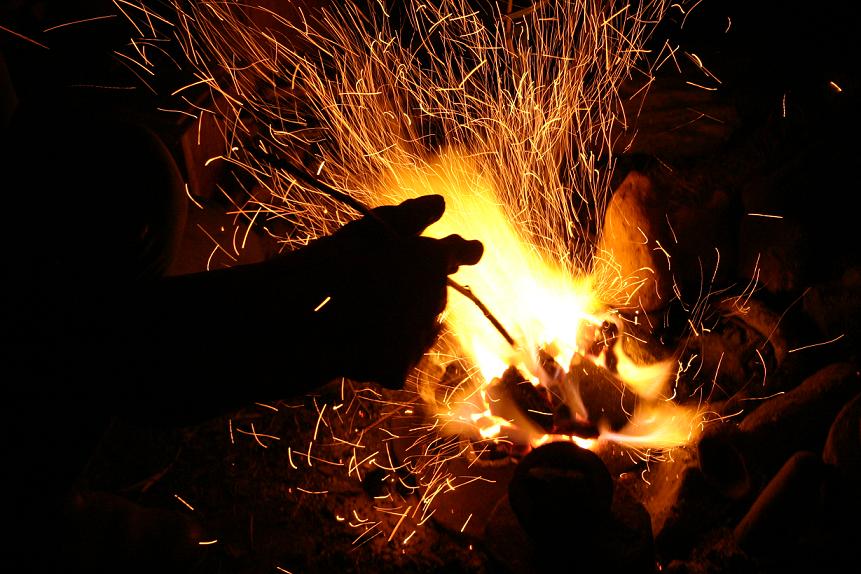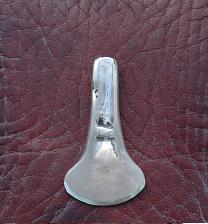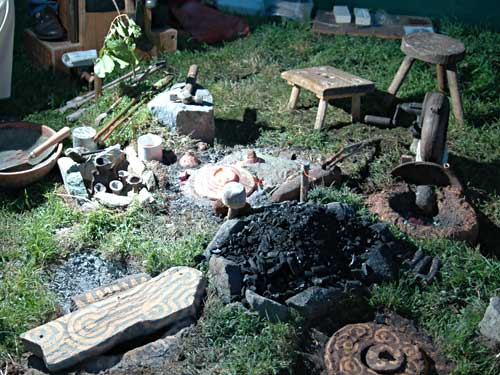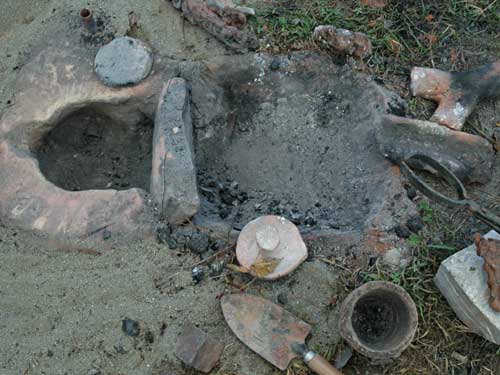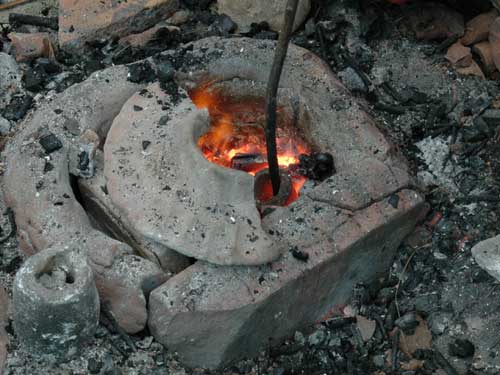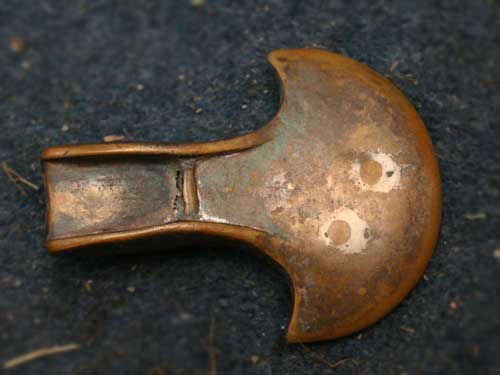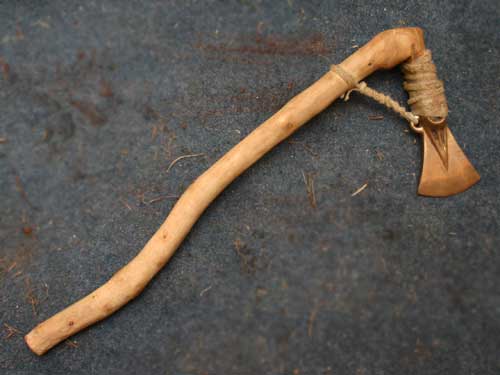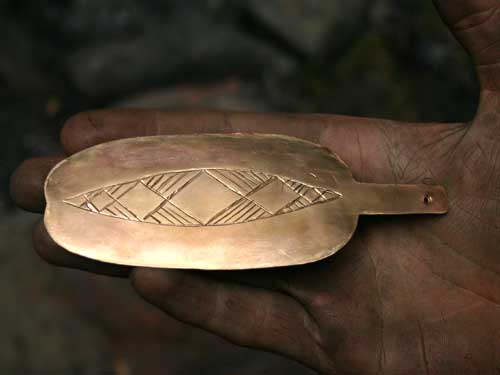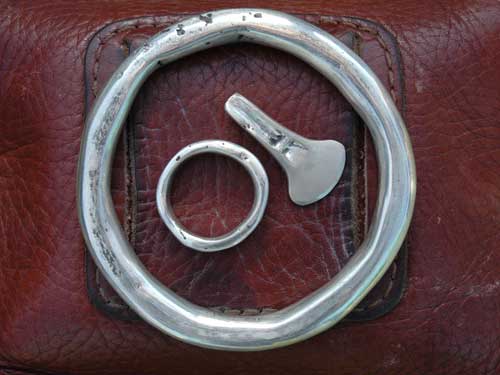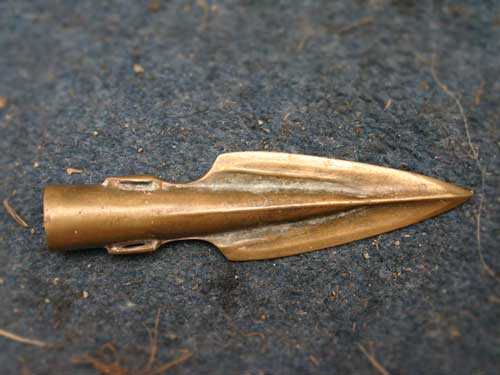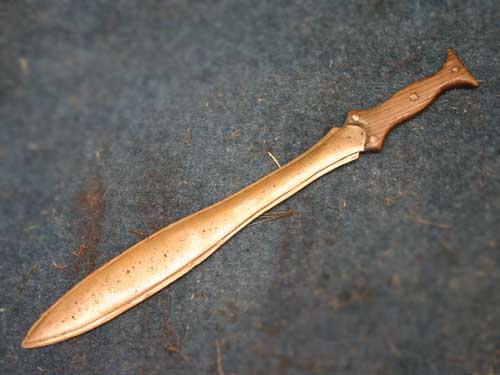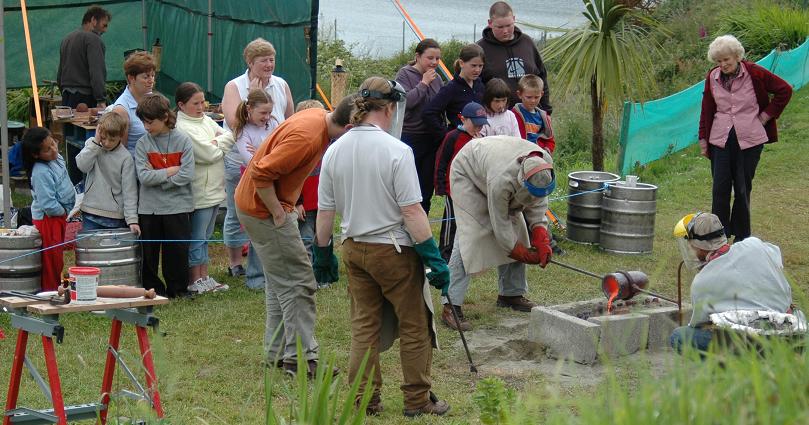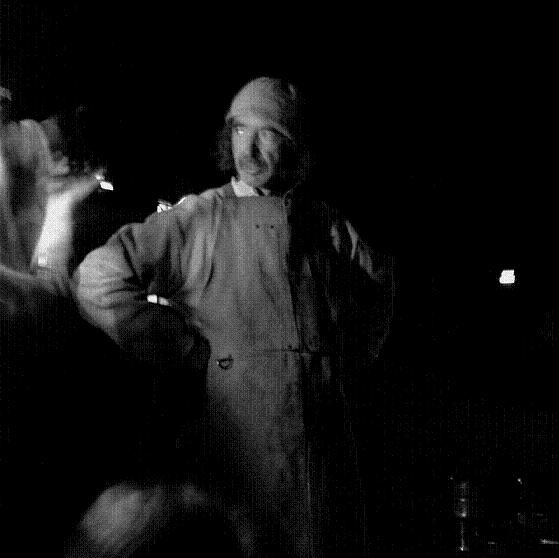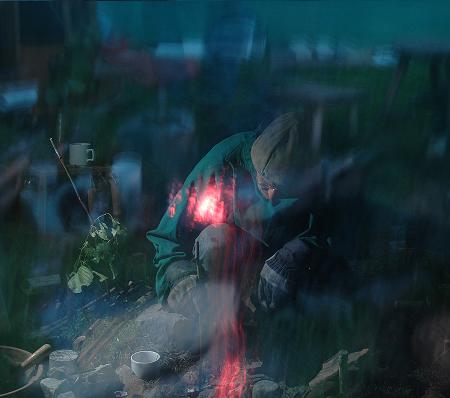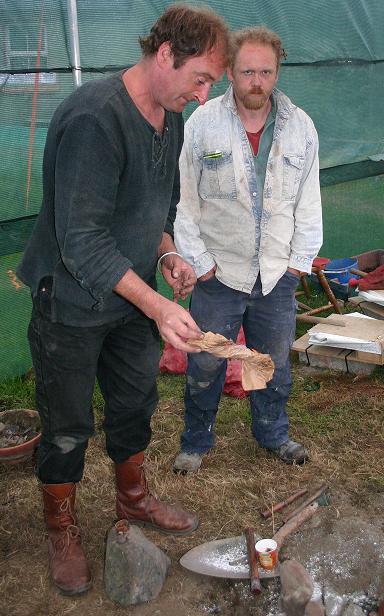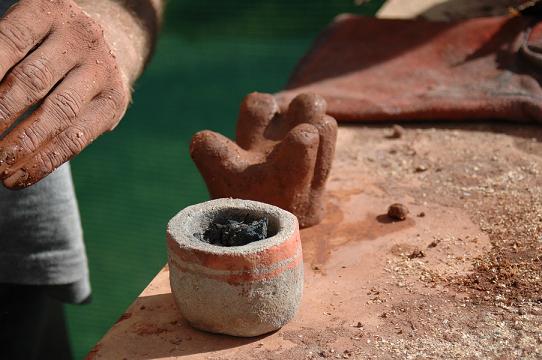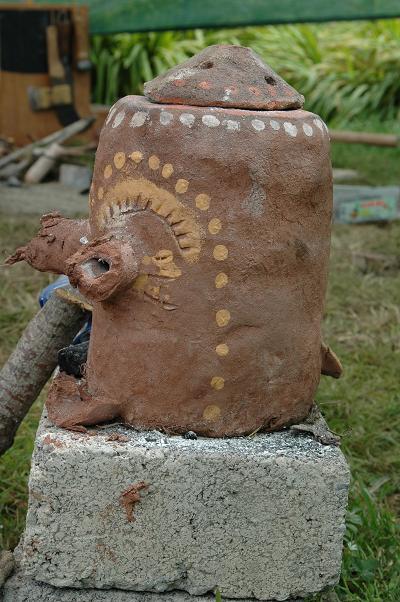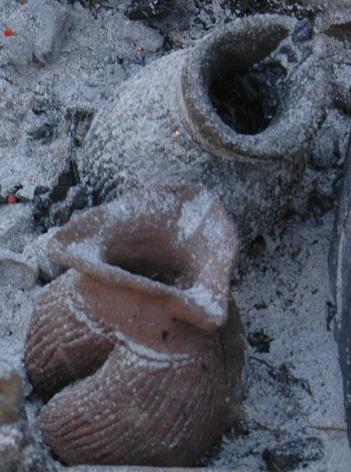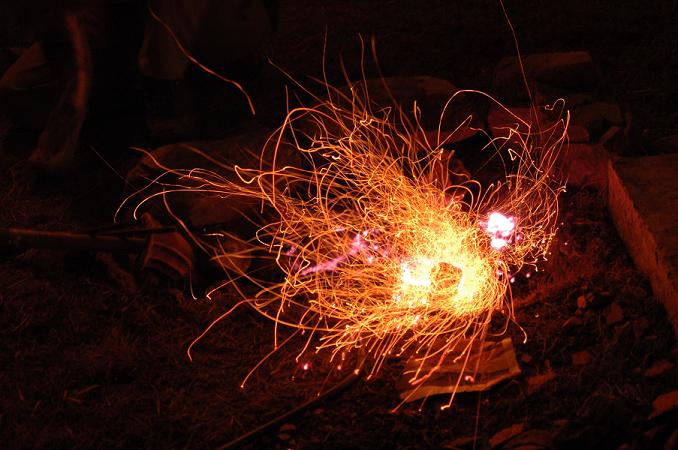|
UMHA AOIS - 10 YEARS ON
The Bronze Age 4,000 Years On Oileán Cleire (Cape Clear Island) Co Cork: 20 June – 2 July 2005 by participant Billy Magfhloinn 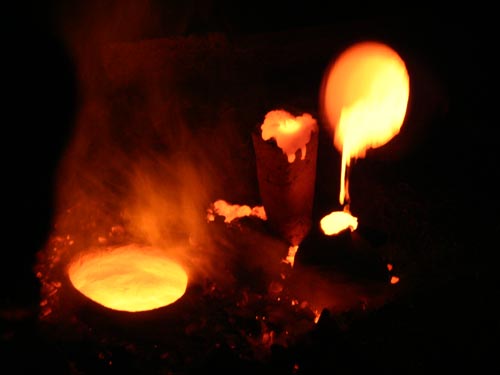 Umha Aois is a group that experiment with casting technology of the Irish Bronze Age. We had a two week symposium this year, with sixteen participants.It took place on the beautiful island of Oileain Chleire, in the west Cork Gaeltacht. We experimented with stone and clay moulds, using a variety of techniques. Also, an important element this year was research into furnace technologies. We used free standing upright midlde eastern types, pit furnaces and bowl furnaces. A whole host of air intake systems were used, and next year we will be getting archaeologists to record the results with thermocouples, stopwatches etc. We also tried different clay mixes, including copious amounts of horse dung, for both crucibles and moulds. Parra O Siochain managed to heat 2 kilos of bronze in one go, using a single bellows. It took a few hours of slow, easy pumping, but was quite successful. At an experiment held after the event at the Cavan County Museum Holger Lonze and I managed to heat about a kilo (from a cold, freshly made pit) to pouring temp. in about forty minutes. This was achieved by two pairs of bellows and constant (but not too vigorous) bellowing. We tried different air intake systems, and I found two particularly effective, especially when used in combination. The first is the top blowing as described here. The other system was based on a teapot stand, invented by Cliodhna Cussen. This was an elevated, perforated platform upon which the crucible stood. The air flows directly up from the bottom in a uniform way all around the crucible, thus distributing the heat evenly. Since there are no teapot stand type devices found in the archaeological record, John suggested the use of large segments of broken pots and mould fragments in the bottom of a bowl furnace to act in a similar way, baffling the air up evenly through the charcoal. This diagram explains how it works.
When we were casting into stone moulds, we used soft limestone, and only heated the moulds to about 60 deg. C. This caused them to shatter to bits. Still, I cast a sword by hand carving a stone mould. I have to tell you, this is one of the most satisfying feelings ever. Success. Also, I cast two swords in clay moulds, using willow rods as stiffeners. Holger and I made inner moulds of fine clay, sand and dung. We hatched the surface so the outer layer would adhere. We then made a rougher layer, witha higher amount of dung and sand in the clay, and incorporated the willow stiffeners in this layer. We fired the lot, and although they cracked a small bit in the middle, they poured a treat. One interesting thing happened. We made small vents in the clay to allow gasses to escape. After firing the moulds the sticks burnt out, and when we poured, the bronze flowed into the space and the swords had two bronze sticks attached to them up the sides. It was strange, but worked a charm. The swords ended up being a bit thick (my fault) but at least one if not both will be rescuable. We used charcoal dust on one side of the swords, and ash on the other to compare. Thus one side was rough (charcoal), and the other was smoother (ash side).  Here's an image of one of the swords in the stone mould.As you can see, the mould doesn't survive all that well. Still, it's worth it for the result. 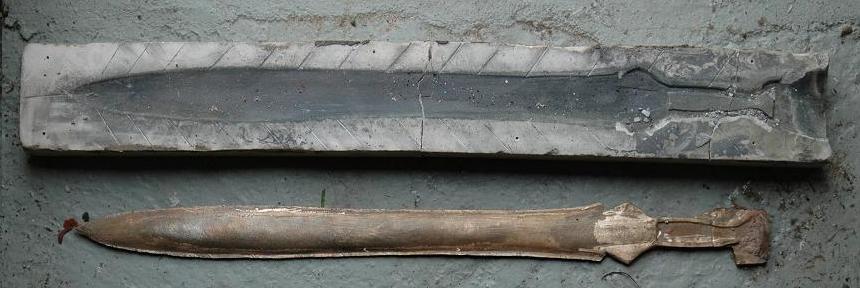 As mentioned above, we experimented with many different hearth styles, and found there are probably a great deal of variables that effect the efficiency of the system. Johnny Fyffe spent many days experimenting with chimneys, draughts and hearth shapes, and eventually produced a hearth with a very high turnover, at one stage getting decent pours every half hour. 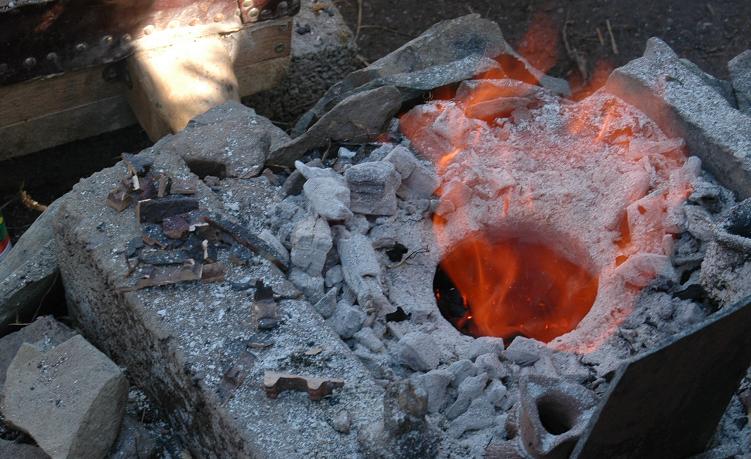 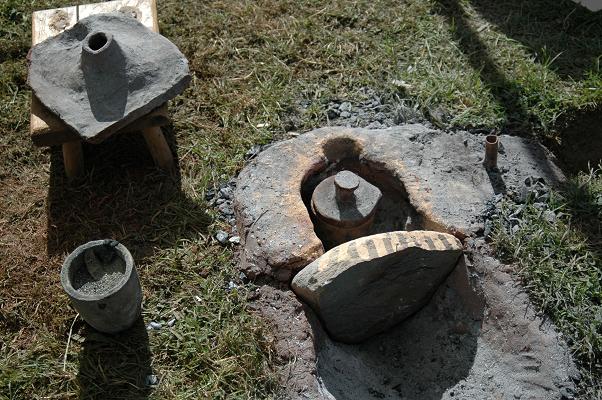 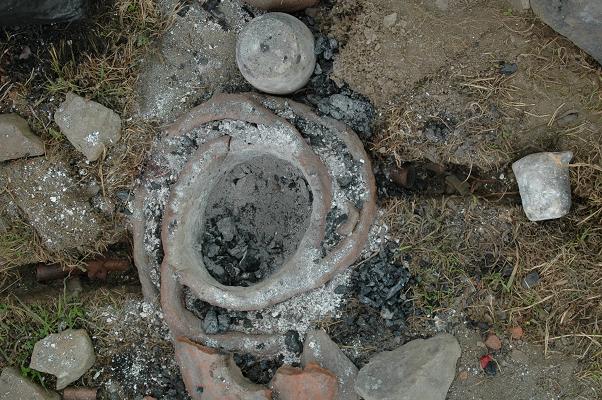 Parra O Siochain is an engineer who specialises in the construction of racing motorbikes. He spent several days using his know-how to construct a mighty furnace, which proved very successful in slowly melting large amounts of bronze. His watering-can shaped bowl was quite a contraption, but effective nonetheless Go Jimmy! 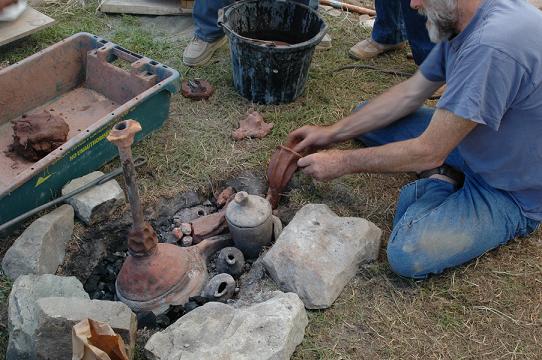
|
|||||||||||||||||||||||||||||||||||||||||||||||||||||||||||||||||||
|
||||||||||||||||||||||||||||||||||||||||||||||||||||||||||||||||||||
